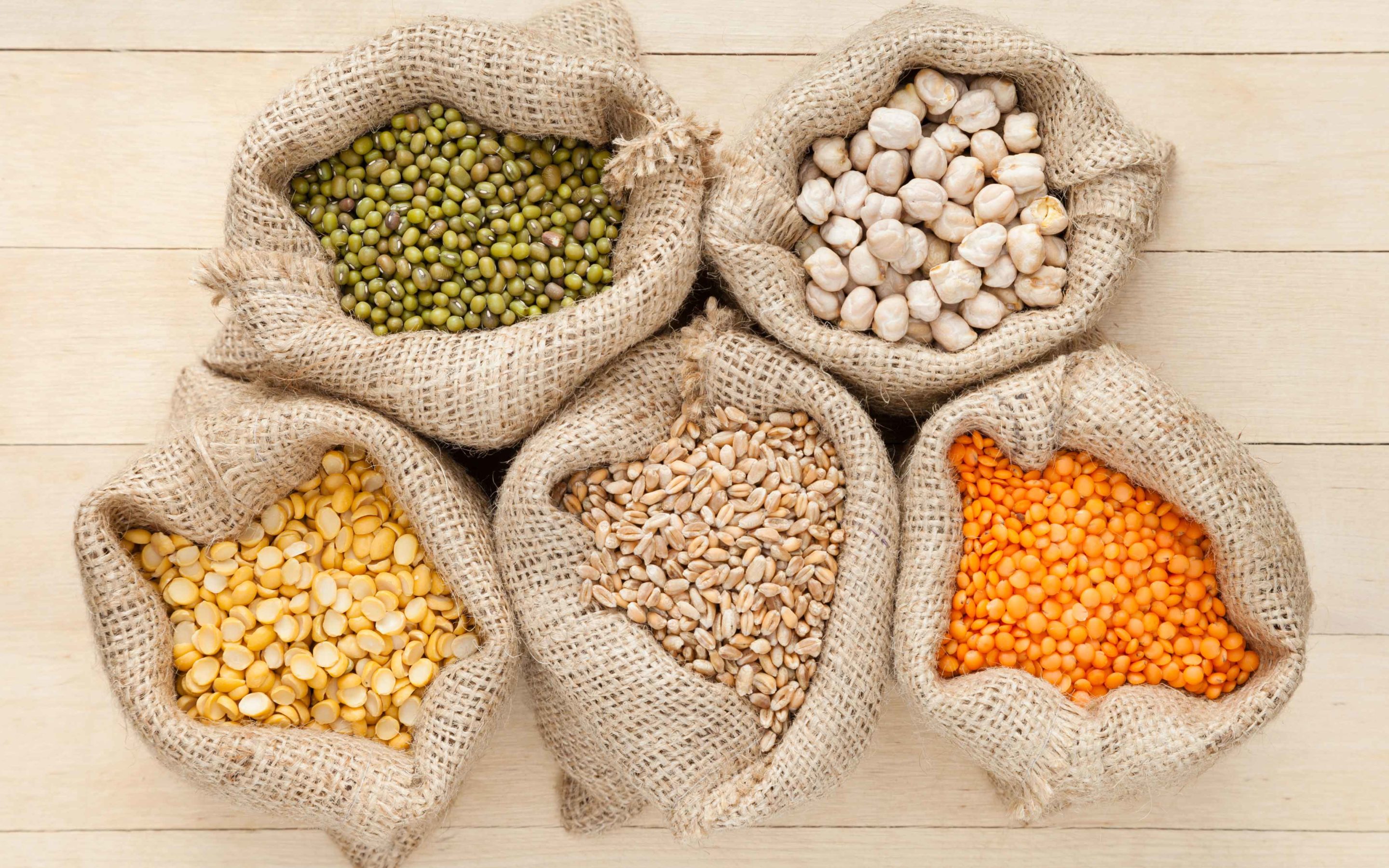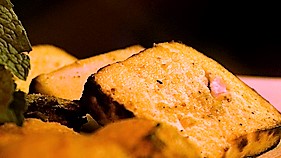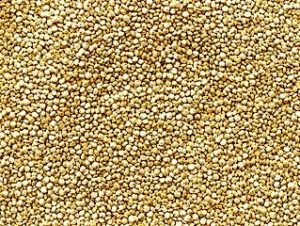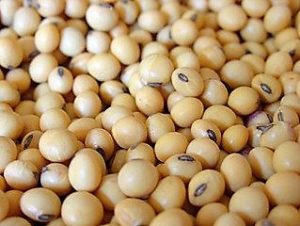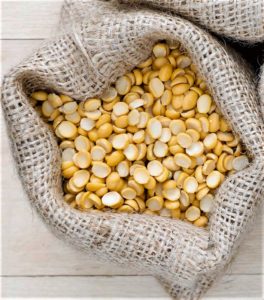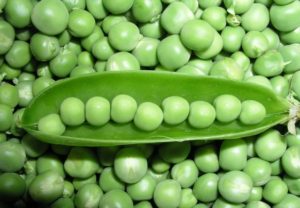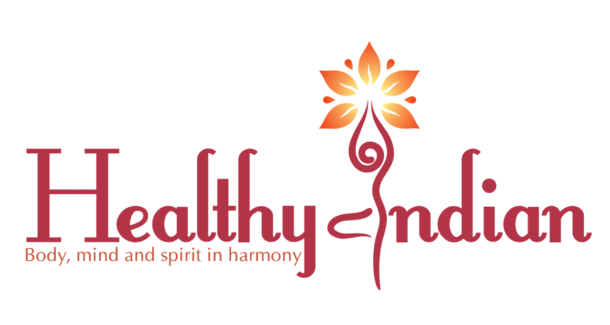One of the most common complaints I get in the office and on the lecture circuit is the lack of protein options for my vegetarian/vegan patients. Although many of my patients and followers have been great about lowering their sugar and excess carb intake, especially if they have or are at risk for diabetes, often they are consuming insufficient protein to support metabolism, muscle development and satiety.
In short, low protein diets leave individuals feeling lethargic and hungry all the time. Generally I’ve been pushing my patients towards getting closer to 1.5 grams/kg of protein which is about 100 grams of protein daily for a 70 kg individual, with a goal of around 30 grams per meal. When my patients bring in their nutrition data, often their daily protein intake is well below 50 grams and often between 20-30 grams for the entire day, especially if they are skipping meals.
This blog post provides a detailed summary of some key sources of plant-based proteins. This is not an all inclusive list but hopefully highlights that you can be strong, energetic and healthy on a vegetarian diet. There are some elite vegan/vegetarian athletes you can turn to for more resources and inspiration, like Rich Roll.
Dairy (including Eggs)
If your diet allows dairy and you are not allergic or sensitive to it, then I am a big fan of organic, full fat, preferably grass-fed dairy if available. Full-fat dairy can actually help lower diabetes risk.
Greek yogurt is an especially impressive source of protein and depending on the brand can deliver 16-20 grams of protein per serving.
For my Indian patients and anyone who is an Indian food lover, paneer (cottage cheese) provides ~6 grams of protein per serving. Ideally you make your own out of high quality milk and a recipe for paneer-making is here.
If your diet also allows eggs, then that would be fantastic. Eggs with the yolks are a 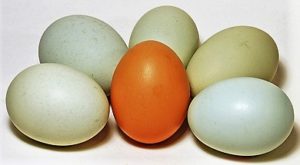 great source of high quality, micro-nutrient-dense protein (6 grams protein per egg) which in the majority of cases does not raise blood cholesterol.
great source of high quality, micro-nutrient-dense protein (6 grams protein per egg) which in the majority of cases does not raise blood cholesterol.
Nuts
Nuts are an excellent source of plant-based protein, healthy fats, fiber and micronutrients with a relatively lower 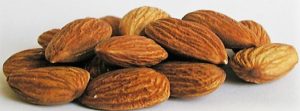 amount of carbs. An ounce of most nuts has around 6 grams of protein, which means a typical daily serving size of 1.5 oz has close to 10 grams of protein. Almonds rank among the highest protein nuts.
amount of carbs. An ounce of most nuts has around 6 grams of protein, which means a typical daily serving size of 1.5 oz has close to 10 grams of protein. Almonds rank among the highest protein nuts.
I love mixing nuts into many of the vegetarian proteins mentioned in this post (yogurt, quinoa salad, lentils, etc.) to make them more nutrient dense.
Nut flours, nut butters and nut milks are additional ways to benefit from the power of nuts, but keep in mind that some of these forms of nuts can be processed and also introduce extra calories and anti-nutrients like phytic acid which we’ll refer to later.
Since there is such a wide variety of nuts to choose from, I would refer you to my dedicated blog post on nuts which is here.
Hemp Seeds
Hemp Seeds, originating form the cannabis sativa plant, are a complete protein source for a vegan diet. Although it belongs to the same family as the marijuana plant, it contains only trace amounts of THC, the compound responsible for the drug-like effects in marijuana. There are other nutritious seeds you can add to your diet like flax and pumpkin, but I’m featuring hemp due to its protein content.
Hemp seed is also rich in zinc, calcium, magnesium, iron, and selenium. Furthermore, it is a good source of omegas 3 and 6 fatty acids in an optimal ratio for human health. I add hemp seeds to my salads, smoothies, and low carb granola (mix of nuts, seeds, unsweetened coconut flakes and dark cacao).
Ancient Grains (Quinoa, Amaranth)
Quinoa and amaranth are ancient gluten-free grains that contain all 18 essential amino acids, making them a complete protein. Both have around 8g of protein and about 40g of carbohydrates in 1 cooked cup in addition to micro-nutrients like iron, magnesium and B-vitamins.
Although quinoa has been the most popular ancient grain of recent times, amaranth is a strong contender which has been used medicinally all over the world (South Asia, East Asia, Latin America and Africa) due to its potent antioxidant/anti-inflammatory activity which is reviewed in depth here.
You can use amaranth in the same ways as quinoa and this site has a long list of creative ways to incorporate amaranth into your diet. You can add ancient grains (cooked or toasted) to a vegetable dish, a salad, a vegetarian soup, or you can also serve with nuts and berries as a hot breakfast.
Millet is a gluten-free ancient grain (like quinoa and amaranth) with a macro-nutrient profile similar to amaranth (7 grams of protein and 40 grams of carb).
One precaution is that millet (aka “bajra” in Indian cooking), specifically pearl millet, can adversely affect your thyroid gland. Much of the millet sold in stores today is proso millet which does not appear to have the same effect.
For carb-minded folks, the key is to mix these grains with lower glycemic vegetables, nuts and seeds. Remember, since many of these ancient grains are loaded with so many different micronutrients, they can often buffer or mitigate some of the glucose-raising effects.
Soy
Soy in its natural form can be a healthy plant-based protein. A 3 oz serving of tofu has around 8 grams of protein, the same serving of tempeh has double at ~16 grams, and a half cup of shelled edamame has 10 grams of protein.
Unfortunately much of the soy on today’s shelves is processed which means using techniques like acid washing and high temperature heating that can denature the healthy compounds in soy, in addition to artificial flavors like MSG and colors that are often added.
Soy should definitely be bought organic since most soy is genetically modified with very high levels of pesticides compared to most crops. Fermented soy helps lower the amount of mineral-binding phytic acid which I’ve written about here.
In terms of cancer risk due to phytoestrogen content, most studies linking soy to cancers like breast cancer found an association when you isolate the phytoestrogen compound from whole soy products.
However, in populations like the long-living Okinawans, consumption of natural soy is high but cancer risk is extremely low. So we’re talking about buying high quality, organic tofu, tempeh, miso and edamame. If you can’t find a product labeled “organic,” then at least review the package labels and pick the ones with little to hopefully no artificial ingredients.
In regards to soy milk, if your diet allows dairy, choose organic, grass-fed dairy milk. If it doesn’t, organic, unsweetened, minimally processed soy milk is a decent option which has more protein than other non-dairy milks (almond, coconut, etc.) with 8 grams per cup.
Legumes (Lentils and Beans)
I know those of you on a low carb or ketogenic diet may fear lentils and beans for their carb content, but keep in mind that not all of the carbs are absorbed into your bloodstream since they are a source of prebiotic fiber which travels straight to the gut to feed bacteria.
One cup of most cooked lentils and beans has around 15 grams of protein and fiber each, and around 40g of carbs. For you low-carbers who follow net carbs (grams of carb minus fiber), that means a net carb of around 25 grams of which about a third bypasses your bloodstream to feed your healthy gut bacteria, but in some cases may also fuel some disturbing bloating and gas.
Lentils with veggies
Another concern with legumes are anti-nutrients like lectins and phytic acid which we already discussed. Again, these can rob essential minerals from your body while also irritating the lining of your gut and trigger autoimmune reactions in susceptible individuals.
The good news is that soaking and cooking, especially pressure cooking legumes (like your parents or grandparents may have done), can virtually eliminate most of the anti-nutrients and maximize the dose of micronutrients like folate, B-vitamins, copper and magnesium. Individuals who get bloating and gas often find these symptoms subside when legumes are soaked and especially sprouted. If you still get persistent digestive symptoms with legumes, consider eliminating them from your diet.
Green peas are legumes (like lentils and beans), but I put them in a separate category since they are a bit different. Often served as a side dish, peas are a good protein source for vegetarians and vegans. One cup (240 ml) of cooked green peas contains 9 grams of protein. This is slightly higher than the protein amount found in a cup of milk. A single serving of green peas covers more than 20% of your daily fiber, folate, manganese, thiamine and Vitamins A, B, C, and K requirements, and includes key minerals like magnesium, iron, copper, zinc and phosphorus.
Peas also contain leucine, a rare branched chain amino acid very few plant-based foods which helps with metabolism, muscle building and weight loss. A major reason why peas are often a key ingredient in vegan protein powders.
Protein-Rich Vegetables
While all fruits and vegetables contain protein, the amount varies quite a bit. Vegetables with the highest protein amounts include artichokes, asparagus, broccoli, brussels sprouts, spinach, potatoes, and sweet potatoes. These vegetables contain about 4-5 grams of protein in every cooked cup (240ml). If you are sticking to a low carb, ketogenic type diet, then focus on lower glycemic options like broccoli, brussels sprouts, spinach and even kale which has closer to 3 grams of protein per cooked cup.
As you can imagine, making soups and green smoothies using combinations of these ingredients can amplify your plant-based protein intake even further.
Protein Powders
I’m open to adding a high quality protein powder supplement to a real food diet. I will often use these as a post-workout drink or on some days when I just can’t get a meal together, I may blend up a nutrient dense protein smoothie on the go.
Generally you should opt for a protein powder that has no sugar and no artificial ingredients including sweeteners (other than stevia which is acceptable). Be sure the macro-nutrients (carbs, protein, fat) are aligned with your goals and activity levels. I prefer whey protein since it has the most scientific support regarding benefits. A single scoop of most whey protein powders has around 25 grams of protein.
This is a nice overview of some of the supportive evidence out there for whey protein lowering inflammation, heart disease risk factors and other chronic health conditions.
For those avoiding all forms of dairy, vegan protein powders may include some mix of pea protein, brown rice and/or hemp seed. Same principles apply as above for selecting brands that have the least amount of processed ingredients.
Key Points
There are multiple options for plant-based proteins so hopefully you are not feeling as hopeless now as you might of at the start of the post. If you do have signs of insulin resistance (pre-diabetes/diabetes, high triglycerides, obesity, etc.), then you may at least initially have to be more carb restricted and then later as your body composition and labs improve, you may be able to gently increase healthy carbs. As insulin resistance reverses, your ability to tolerate carbs improves, but you still have to be mindful of portions.
A few key points to summarize:
- Use a rational mix of lower carb plant proteins (dairy, soy, eggs, nuts, seeds, etc.) with smaller portions of higher carb proteins (legumes, ancient grains, etc.)
- Mix your legumes and ancient grains with veggies, herbs, spices and healthy fats to make them more nutrient dense and keep glucose stable
- Don’t just judge a food by its carbs. Remember that a 40 gram serving of lentils is different than 40 grams of rice or sugar due to its high fiber content, micro-nutrient content, and the fact that a significant amount of the prebiotic fiber won’t enter the blood.
- Stay physically active and consider incorporating intermittent fasting as well. These practices can help counteract some of the effects of a higher carb diet.
Source: https://culturalhealthsolutions.com/vegetarian-proteins-diabetes-weight-loss/

